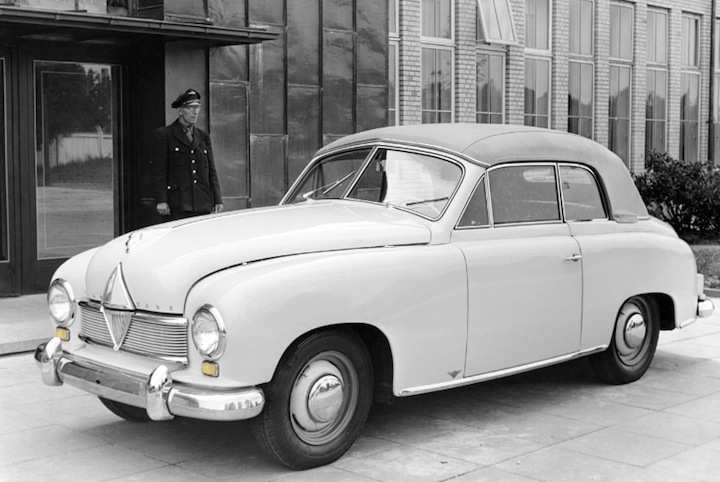Borgward pioneered direction indicators in 1949

(November 4, 2015) STUTTGART, Germany — Many technical features that are taken for granted in today's automobiles were only introduced as standard equipment because of the determined efforts of valiant pioneers. Carl F. W. Borgward (1890-1963) was one of them. The direction indicator was one of the trendsetting technical innovations that made the post-war 1949 Borgward Hansa 1500 (pictured above) a milestone of automotive history.
That's because this 1949 model was the first German automobile to feature a direction indicator system as standard equipment.
Although Carl Borgward practically devoured almost all the automotive technology magazines he could get his hands on and was virtually unmatched in his efforts to successfully bring together all of the new research findings in the automotive sector, he got his idea for the direction indicator simply from his close observation of the army vehicles of the U.S. forces that occupied Bremen after World War II.
He noticed that almost all of these vehicles were equipped with advanced direction indicator systems. This fired the imagination of the automobile developers at Borgward.
Electro-mechanical trafficators had been introduced in Germany in 1928. These systems were attached to the sides of vehicles, where they were supposed to clearly indicate the direction in which a driver wished to turn by extending a signal arm. Because it changed a vehicle's silhouette, an extended trafficator was clearly visible in good light.
However, this technology was very fragile from a mechanical standpoint and it greatly restricted the possibilities of body design. Moreover, whenever a vehicle travelled at high speeds the increased air resistance prevented the signal arms, which were operated by electromagnets, from extending. As a result, trafficators were no longer state-of-the-art for advanced automobiles after World War II.
The better is the enemy of the good. Borgward immediately recognized the advantages of the new technology, which was already being successfully used in the USA. With its typical determination, the German carmaker spared no effort to introduce direction indicators as standard equipment. Several German supplier companies such as Bosch also began to experiment with direction indicators during this time. The suppliers used a bimetal element to ensure that the lights would flash reliably.
When Carl F. W. Borgward surprised the automotive world in 1949 with Germany's first newly designed post-war car, the Hansa 1500 not only boasted a breath taking pontoon shape but also served as a shining example of progress, thanks to its standard-fitted direction indicator system.
Borgward introduced this innovation much earlier than required, as legislators didn't "see the light" until some years later. The German government made direction indicators mandatory for all vehicles in 1961, as traffic continued to increase in the country as a result of Germany's "economic miracle."
Borgward was originally a German automobile manufacturer founded by Carl F. W. Borgward, which ceased operations in the 1960s. The company was based in Bremen. The Borgward group eventually produced four brands of cars: Borgward, Hansa, Goliath and Lloyd. The marque has since been revived by Borgward's grandson and unveiled its first new car in over 40 years in 2015
